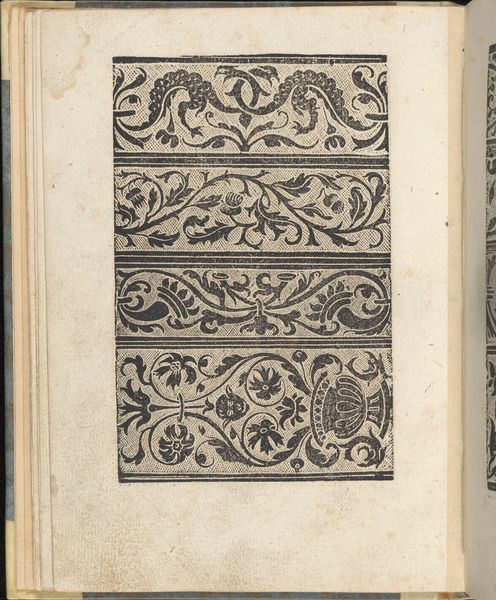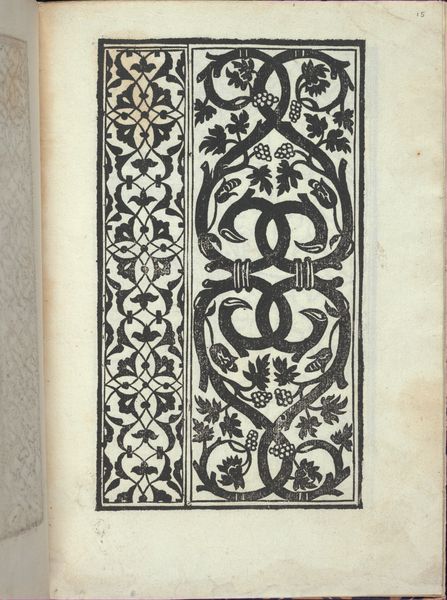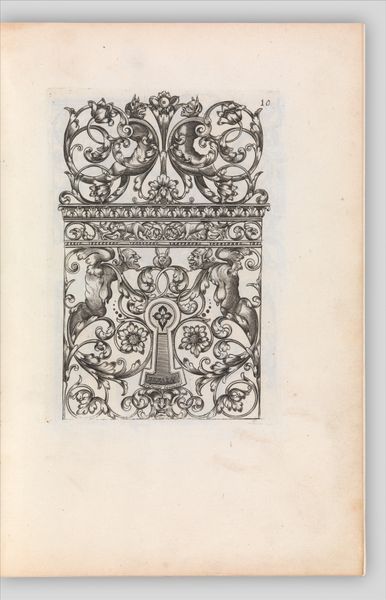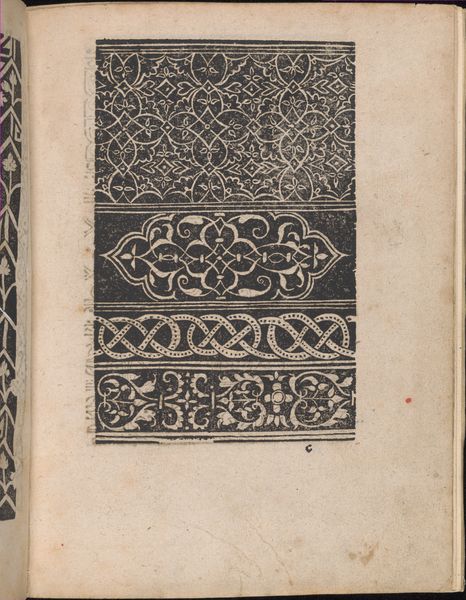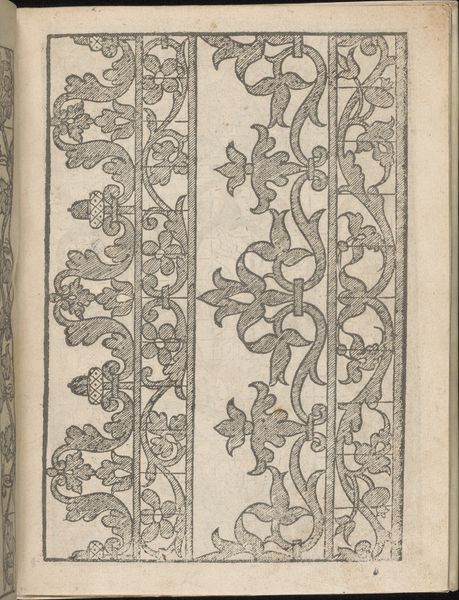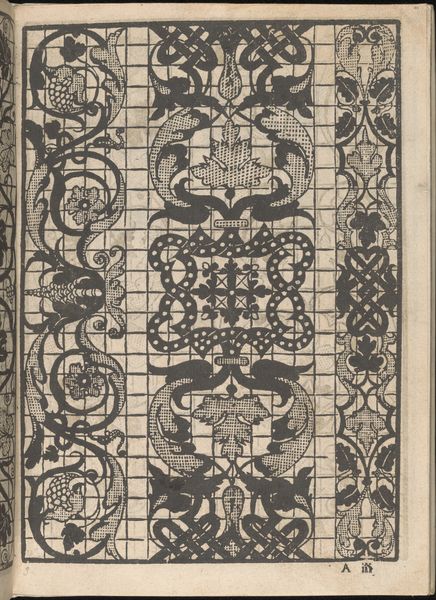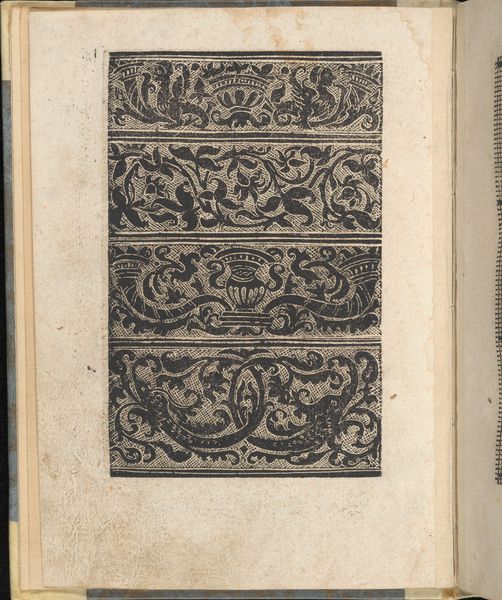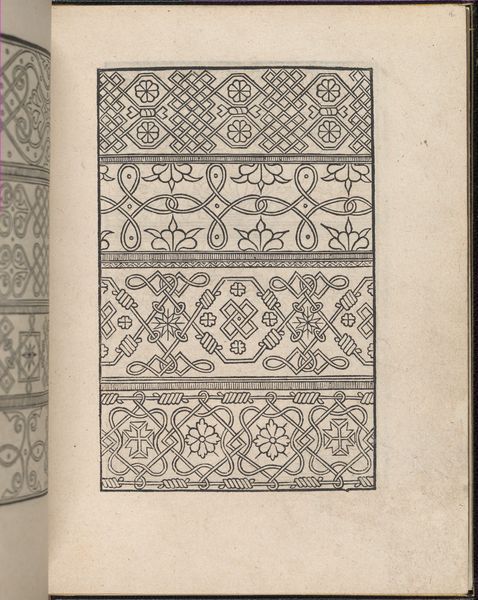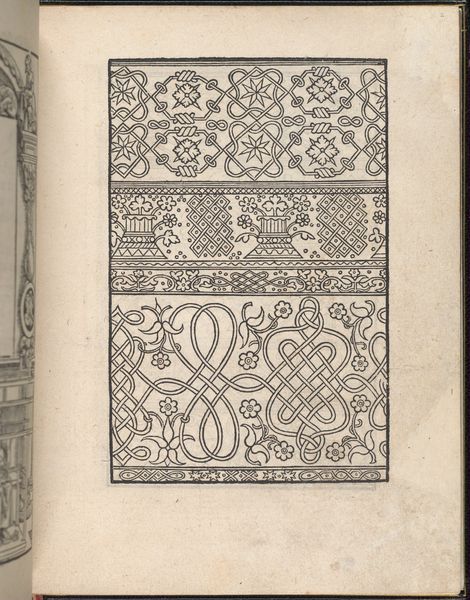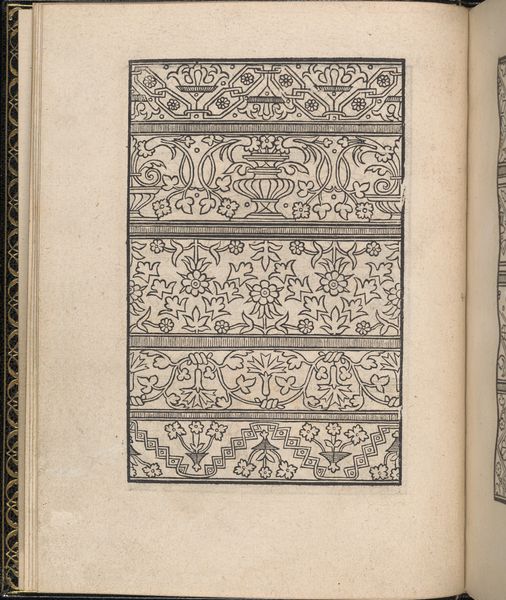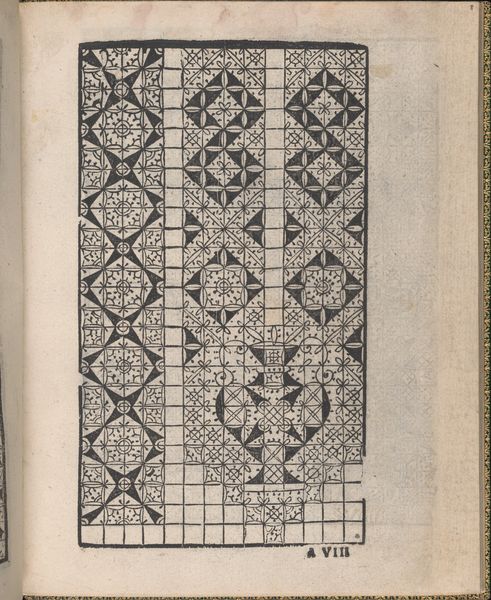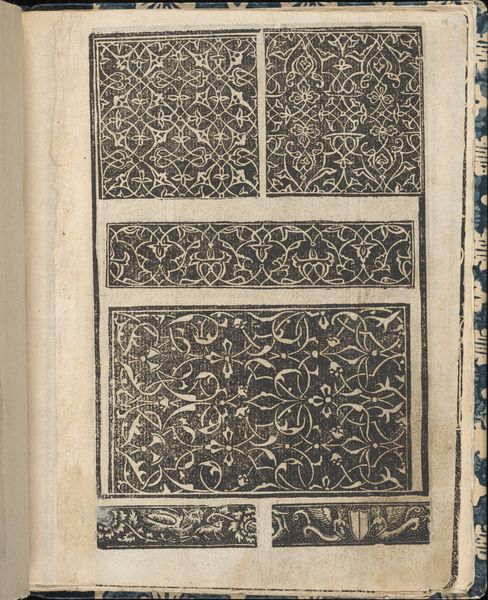
Three Designs for Embroidered Headboards, from Nouveaux Liure da Partements, part of Œuvres du Sr. D. Marot 1703 - 1712
0:00
0:00
drawing, ornament, print, engraving
#
drawing
#
ornament
#
baroque
# print
#
watercolour bleed
#
decorative-art
#
engraving
Dimensions: Sheet: 13 1/2 × 8 1/2 in. (34.3 × 21.6 cm) Plate: 10 3/4 × 7 1/2 in. (27.3 × 19 cm)
Copyright: Public Domain
Editor: So, we're looking at "Three Designs for Embroidered Headboards" by Daniel Marot the Elder, dating from around 1703 to 1712. It's a drawing and print – an engraving, even – with incredibly intricate baroque ornament. The patterns feel opulent, but also a bit rigid. What's your take? Curator: This print speaks volumes about the intersection of power, display, and identity in the early 18th century. Baroque ornament, like what we see here, wasn't merely decorative. It was a carefully constructed visual language used by the elite to project their status and legitimacy. Consider the headboard, a symbol of the private sphere, yet meticulously designed for public consumption through visitors. Editor: So the bedroom isn't really private then? More of a stage? Curator: Exactly. Marot's designs reveal how even intimate spaces became sites for reinforcing social hierarchies. These headboards, intended for embroidery, speak to the labor involved in crafting these displays. Think about the women, likely from marginalized communities, who would have executed these designs, contributing to the construction of elite identities while remaining largely invisible themselves. Editor: It makes you wonder who got to benefit from this type of ornament, and at what cost? It feels almost like visual propaganda. Curator: In a way, it was. These aren’t just pretty designs. They're evidence of a carefully orchestrated system of visual messaging, reinforcing the status quo. Reflect on who has access to beauty, to comfort, to self-expression, and who is systematically denied these opportunities. Editor: I hadn’t thought about it that way, but seeing it as part of this larger power structure definitely shifts my perspective. It makes the ornament much more provocative. Curator: Absolutely. Art provides unique opportunities to interrogate such systems and demand broader accessibility, and equity in representation.
Comments
No comments
Be the first to comment and join the conversation on the ultimate creative platform.

